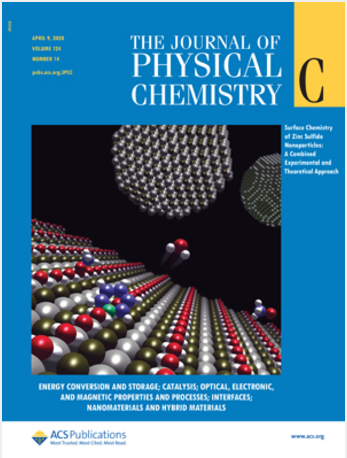协调MOF中气体分离主动学习运动中的吸附和扩散
IF 3.3
3区 化学
Q2 CHEMISTRY, PHYSICAL
引用次数: 0
摘要
本研究建立了一个主动学习(AL)框架,旨在通过解决气体分离应用中必不可少的吸附和扩散机制,提高金属-有机框架(MOF) CuBTC的选择性预测。传统的预测气体在各种压力、温度和成分(PTX)条件下的选择性的方法面临着相当大的计算需求,特别是在模拟多孔材料中的吸附和扩散时。我们通过将高斯过程(GP)模型与大规范蒙特卡罗(GCMC)和分子动力学(MD)模拟相结合,应用人工智能根据最高的模型不确定性(强调探索)迭代选择数据点,以及其他方案来解决这一挑战,以系统地提高不同条件下的预测精度。我们评估了几种针对气体分离中涉及的两种不同分子水平现象的人工智能策略:吸附和扩散。具体来说,基于吸附的选择性预测方法采用人工智能来优先选择吸附预测中具有高不确定性的数据点。相比之下,基于扩散的选择性预测方法将人工智能定向到扩散预测中具有高不确定性的区域。这些方法包括直接预测选择性以及基于传播的方法,其中选择性不确定性是根据吸附或扩散预测中的单个成分不确定性计算的。此次探索的高潮是端到端(E2E)框架,该框架将吸附和扩散建模集成在单个人工智能驱动的数据标记过程中。在这个框架中,吸附或扩散预测的不确定性指导数据选择,使更精确的模型训练跨越吸附和扩散。结果表明,扩散聚焦的E2E方案具有最高的预测精度和更高的效率。这种方法最大限度地减少了冗余采样,提高了吸附和扩散模型的数据采集效率。本文章由计算机程序翻译,如有差异,请以英文原文为准。

Harmonizing Adsorption and Diffusion in Active Learning Campaigns of Gas Separations in a MOF
This study establishes an active learning (AL) framework designed to enhance the prediction of selectivity in the metal–organic framework (MOF) CuBTC by addressing the adsorption and diffusion mechanisms essential for gas separation applications. Traditional methods of predicting gas selectivity across broad pressure, temperature, and composition (PTX) conditions face considerable computational demands, particularly when simulating both adsorption and diffusion in porous materials. We tackled this challenge by integrating Gaussian Process (GP) models with grand canonical Monte Carlo (GCMC) and molecular dynamics (MD) simulations, applying AL to iteratively select data points exclusively based on the highest model uncertainty (emphasizing exploration), and others schemes, to systematically improve prediction accuracy across diverse conditions. We evaluated several AL strategies tailored to two distinct molecular-level phenomena involved in gas separations: adsorption and diffusion. Specifically, adsorption-based selectivity prediction methods employed AL to preferentially select data points characterized by high uncertainty in adsorption predictions. In contrast, diffusion-based selectivity prediction methods directed AL toward regions exhibiting high uncertainty in diffusion predictions. These approaches included direct prediction of selectivity as well as propagation-based methods, where selectivity uncertainty was calculated from individual component uncertainties in adsorption or diffusion predictions. The culmination of this exploration is an end-to-end (E2E) framework that integrates adsorption and diffusion modeling within a single AL-driven data-labeling process. In this framework, uncertainty in either adsorption or diffusion predictions guides data selection, enabling more precise model training across adsorption and diffusion. Results indicate that the diffusion-focused E2E scheme yields the highest predictive accuracy and a more efficient process. This approach minimizes redundant sampling and improves the efficiency of data acquisition across adsorption and diffusion models.
求助全文
通过发布文献求助,成功后即可免费获取论文全文。
去求助
来源期刊

The Journal of Physical Chemistry C
化学-材料科学:综合
CiteScore
6.50
自引率
8.10%
发文量
2047
审稿时长
1.8 months
期刊介绍:
The Journal of Physical Chemistry A/B/C is devoted to reporting new and original experimental and theoretical basic research of interest to physical chemists, biophysical chemists, and chemical physicists.
 求助内容:
求助内容: 应助结果提醒方式:
应助结果提醒方式:


